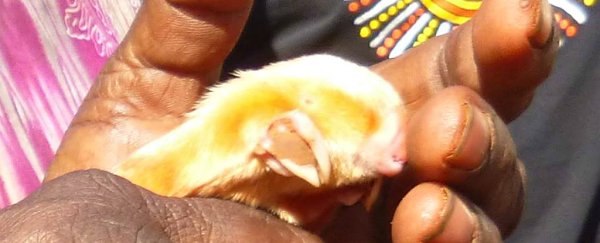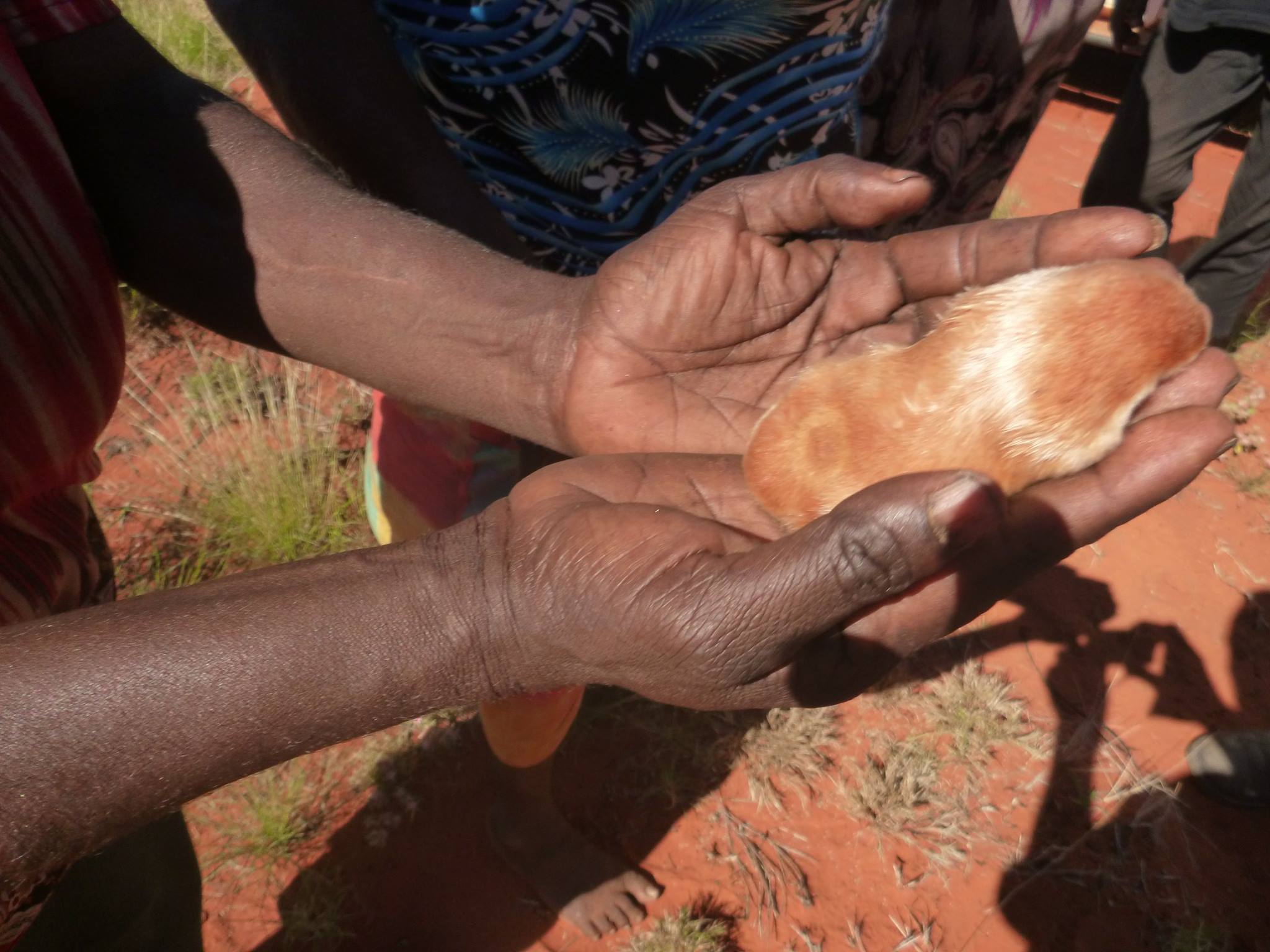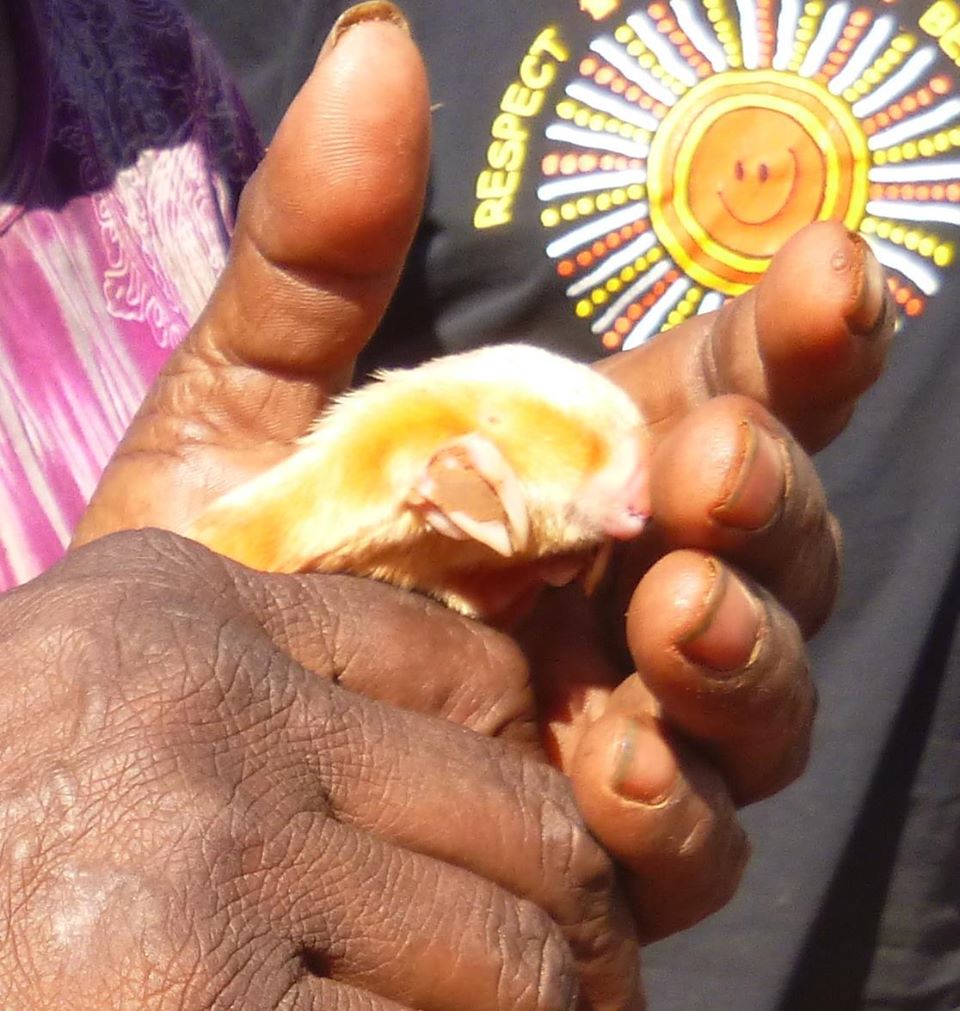Last week, rangers in Western Australia were lucky enough to spot this radiant, golden marsupial mole in one of its extremely rare expeditions above ground. And fortunately for us, they filmed the whole thing.
Called a karrkaratul (Notoryctes caurinus) the tiny golden mole is reportedly only sighted between five to 10 times per decade, so the video below is probably one of your best chances to see these little guys in your lifetime (unless you just happen to be a regular in the remote deserts of Australia).
So why are these beauties so rare? As biologist Joe Benshemesh from La Trobe University reported for Australian Geographic back in 2010, the marsupials are one of the few mammals that are able to spend their entire life cycle underground.
"They are arguably the world's most burrow-adapted mammal," he writes, explaining that the moles are blind, with calloused noses and foreheads, and powerful forearms to help them dig.
They eat insects and larvae, and they're so small - weighing only 40 to 60 grams - that they have incredibly low oxygen requirements, which means that they can survive by breathing the air that flows between grains of sand.
"Unlike most burrowing mammals, marsupial moles don't construct hollow tunnels in which to live and run about," says Benshemesh.
"Instead, they tunnel and backfill as they go, carving a hole in the lightly cemented sand ahead with their extraordinary spade-like fore-feet, and pushing the loosened sand back behind themselves with their slightly webbed hind-feet. At the same time they squeeze their tubular body forward a few centimetres at a time."
You can see that behaviour in action in the video below, filmed by the Kiwirrkurra rangers last week:
That might look like a lot of hard work, but Benshemesh explains that the moles also have their own strategies for saving energy:
"While their unusual form of locomotion is slow and laborious, they also seem tuned to a frugal life and save energy and resources by allowing their body temperature to reflect that of the surrounding sand, as if they were reptiles."
In other words, they're pretty boss when it comes to mastering underground life.
This tiny guy was spotted after the rangers had been out filming documentaries about bush food in the area. "We were driving along a bush track on our way home when this little golden creature ran across the road in front of us," Kate Crossing wrote on the Tjamu Tjamu Aboriginal Corporation Facebook page, on behalf of the Kiwirrkurra rangers.
"We all crowded round as Yalti [one of the rangers] held this beautiful creature carefully in her hands, its powerful front feet trying to dig to safety. [Another ranger] Walimpirri told us how he'd last seen one many years ago near Kiwirrkurra, and some of the rangers said they'd never seen one … After a few minutes of wonder we gently put it down away from the road and watched in awe as it dug straight down and disappeared," she says.
There are two recognised species of marsupials moles, the kakarratul, which lives in the deserts of north-west Western Australia, and the itjaritjari (Notoryctes typhlops), which lives in central Australia.
Researchers still aren't sure whether these amazing little guys are so rarely sighted simply because they're chilling below ground the whole time, or, the slightly more depressing option, whether we hardly ever see them because there are actually incredibly few of them left. Sadly, there have been marsupial mole remains found after being killed by cats and foxes.
In the meantime, both species have been classified as endangered until further studies provide more insight into their numbers.
"While unsatisfying, it seems strangely fitting that these wonderfully bizarre animals should have us still confused about their abundance and conservation status," writes Benshemesh.
We couldn't agree more, and are soaking up the sight of this little guy up while we can. <3


